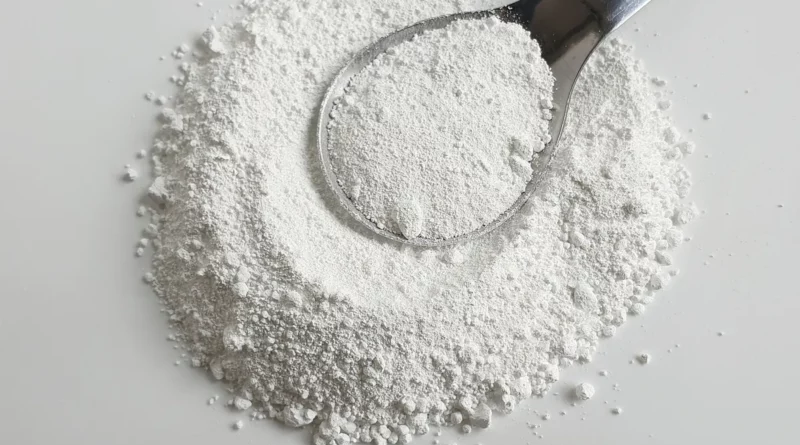What Is Titanium Dioxide?
It is critical to comprehend where it originated from and why we have it.
TiO2 is a vividly colored material that may be utilized as a vibrant colorant in a variety of everyday items. It possesses several lesser-known qualities that make it a vital and critical component in the battle against climate change and skin cancer.
TiO2 has received accolades for its white color, ability to disperse sunlight, and UV resistance. It is a widely used component that may be found in a variety of everyday items. This has a huge impact on both our economy and our quality of life.
- TiO2 is a paint, plastic, and paper additive used across the world.
- Titanium dioxide is utilized as a photocatalyst to remove contaminants from the environment. It may be mixed into concrete, paint, tiles, and windows.
- TiO2, a white pigment, is one of the most important basic ingredients used in paints and coatings.
What Exactly Is Titanium Dioxide?
Titanium dioxide, a white chemical molecule, has been employed in a variety of goods for more than a century. It is employed because of its nontoxic, nonreactive, and bright qualities, which allow it to safely boost the whiteness of numerous materials.
It is one of the most visible white paints. It is shiny and may absorb and scatter UV radiation.
What Applications Does Titanium Dioxide Have?
TiO2 is immensely popular in both the consumer and industrial sectors because of its ultra-white hue, high refractive index, and UV resistance. They can be found in a variety of everyday goods.
Aside from paints, catalytic coatings and plastics, sunscreen, and medicines, other lesser-known applications include packaging, commercial printing, inks, toothpaste, and food (where it is mentioned as a food colorant).
Plastics, Paints, And Coatings
TiO2 is a pigment that may be used in paintings. Pigment White 6, CI 77891, and titanium white are other names for it. It is commonly referred to as “the ideal white” because of its pure, intense whitening capabilities.
Titanium dioxide, one of the most extensively used pigments in the world, is also the foundation for many paint colors. It is also present in polymers and coatings. These are just a handful of the numerous applications for titanium dioxide. It can scatter visible light due to its high refractive index. It produces an opaque, reflecting color that illuminates items or surfaces.
It is utilized as a wind turbine coating. This gives both UV degradation protection and white color. For the same reason, it is also utilized in plastic window frames.
Food
TiO2 is known as E171 and is used as a pigment grade in food. It is used in various cuisines as a whitener, as well as to improve texture and color. E171 can be used to give the chocolate a smooth texture. It can also aid with the abrasive properties of sweets.
Skincare And Cosmetics
Titanium oxide is used in cosmetics and skin care products as both a pigment and a cream thickening. Because of its transparency, UV absorption qualities, and inexpensive cost, ultra-fine TiO2 is utilized as a sunscreen.
What Are The Many Types Of Titanium Dioxide?
TiO2 has varying qualities depending on whether it is manufactured as a pigment or a nonmaterial. Both have no taste or odor and are insoluble.
Pigment-grade TiO2 particles range in size from 200 to 350nm. This form accounts for 98 percent of the total. It’s utilized for light scattering as well as surface opaque applications like paint. This includes using it as a basis or as a stand-alone ‘bright white.’
The main particles of ultrafine TiO2 are fewer than 100nm in size. This kind of titanium dioxide is colorless and transparent, with greater UV scattering and absorption qualities than bigger, more pigmented TiO2 particles.
What Is The Source Of Titanium Dioxide?
Titanium is the most common metal on Earth, yet it is not an element. Titanium dioxide is a naturally occurring chemical created when titanium combines with oxygen in the environment. It is also known as titanium IV oxide or Titania. Titanium is an oxide that may be found in the earth’s crust in the form of minerals. It is also present in other elements such as calcium and iron.
TiO2 is frequently stated to as chemically impervious. This indicates that it is stable and may be utilized in a wide range of industries and applications.
Where Does Titanium Dioxide Come From?
Titanium dioxide was formerly known as. It was developed in a laboratory in the late 1800s. It was not mass-produced until the twentieth century when it was discovered to be a safer alternative to other white pigments.
Titanium and its combination TiO2 may be found in a variety of rocks and mineral sands all over the world. Some of these sands even have a beach sand component. Titanium is most usually found as the mineral Ilmenite (a titanium iron oxide mineral), although it is also found as the mineral Rutile, which is a form of TiO2. These inert molecular components must be separated chemically to produce pure titanium dioxide.




